|
FEBRUARY
2010
�����������������������������������������������������������������������������������������������������������������������������������������������������
27th February 2010 - New research
THE CHOICE OF DOPAMINE AGONISTS
FOR
PARKINSON'S DISEASE
Drug Safety [2010] 33 (2) : 147-161 (Kulisevsky J,
Pagonabarraga J.)
Complete abstract
��������������������������������������������������������������������������������������������������������������������������������������������������������������������������������
The tolerability and safety of ropinirole (Requip) in the treatment of
Parkinson's Disease, was compared to those of other dopamine agonists (bromocriptine,
cabergoline,
pramipexole,
rotigotine,
pergolide),�
the use of a placebo, and when used
alongside L-dopa. Thirty three
years worth of clinical trials were assessed. In all the studies included, dopamine agonists, including
ropinirole (Requip), exhibited a higher likelihood of adverse events than the use of a
placebo. The occurrence of constipation when using ropinirole (Requip) was only 55% of
that of bromocriptine (Parlodel), and 25% of that of L-dopa. There was no difference
between ropinirole (Requip) and rotigotine (Neupro) regarding constipation and dyskinesia. For
nausea, pergolide (Permax) was worse than ropinirole (Requip), but only
narrowly. Both were worse than rotigotine (Neupro). All were clearly worse than
the use of a placebo. Ropinirole (Requip) was worse than pramipexole (Mirapex)
regarding� nausea, dizziness, sleepiness and dyskinesia. Worst for
hallucinations was pergolide (Permax) then rotigotine (Neupro), then pramipexole
(Mirapex), and finally ropinirole (Requip). Hallucinations were far more likely
than when taking a placebo. Confusion and constipation were far worse with
pramipexole (Mirapex) compared with placebo.
In order to refer to this
article on its own
click here.
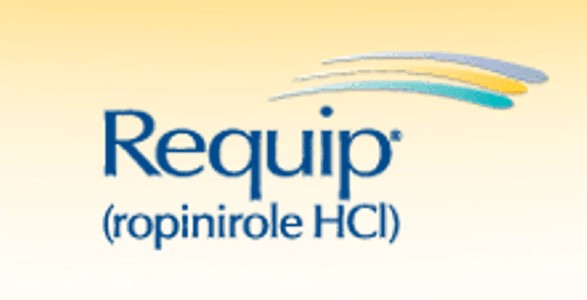 �� ��
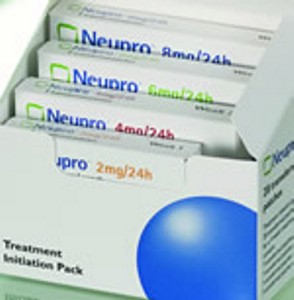 �� ��
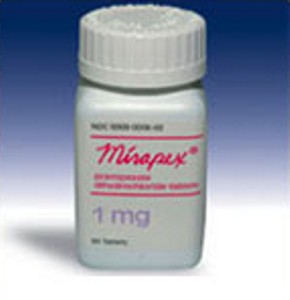 �� ��
 �� ��
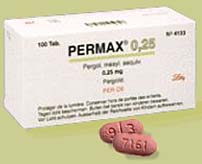
�
20th February 2010 - News release
THE EFFECT OF IBUPROFEN ON
PARKINSON'S DISEASE
It has been widely claimed that Ibuprofen can
lessen the risk of Parkinson's Disease. For the full details go to the
News release.
The research involved 136,474 people who did not have Parkinson�s Disease at the
beginning of the research.
The study found that regular users of Ibuprofen were 40% less likely to develop
Parkinson�s disease than people who did not take Ibuprofen. People who took
higher amounts of Ibuprofen were less likely to develop Parkinson�s disease than
people who took smaller amounts of the drug.
However, the details have not yet been made
available for analysis. Frequently, the results of medical research do not match
the claims made for them.
Ibuprofen
is often taken� for arthritis or pain.
For more information go to
Ibuprofen.
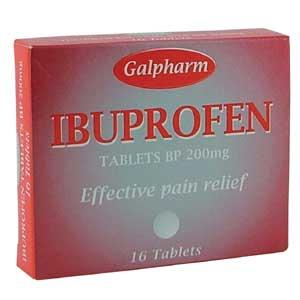 It works by preventing the formation
of prostaglandins. However, prostaglandins have nothing at all to do with the
biochemistry of Parkinson's Disease. So the full details might show that
Ibuprofen has little effect on Parkinson's Disease or that there is only an
indirect association. The most comprehensive research concerning the effect of
Ibuprofen on Parkinson's Disease assessed studies carried out over 40 years. The
effects of Ibuprofen were found to be far less than those of the news release,
and statistically could have shown a reduced association with Parkinson's
Disease of only 11%. For more details see the
Complete abstract. In order to refer to this
article on its own
click here. It works by preventing the formation
of prostaglandins. However, prostaglandins have nothing at all to do with the
biochemistry of Parkinson's Disease. So the full details might show that
Ibuprofen has little effect on Parkinson's Disease or that there is only an
indirect association. The most comprehensive research concerning the effect of
Ibuprofen on Parkinson's Disease assessed studies carried out over 40 years. The
effects of Ibuprofen were found to be far less than those of the news release,
and statistically could have shown a reduced association with Parkinson's
Disease of only 11%. For more details see the
Complete abstract. In order to refer to this
article on its own
click here.
�
16th February 2010 - New book
NATURAL THERAPIES FOR PARKINSON'S DISEASE
Dr Laurie Mischley
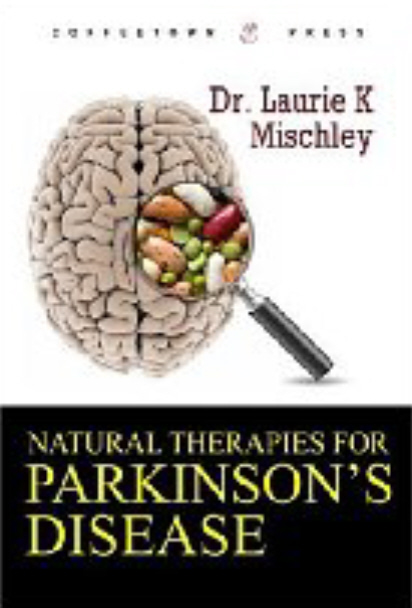 Publisher's
description : Many patients seek alternative and complementary options. This
book fosters an understanding between conventional and complementary providers.
Chapters on : Alpha-Lipoic Acid, Aluminum, Antioxidants, Beta-carotene, Calorie
Restriction, Carnitine, Chelation, Cholesterol, Choline, Coenzyme Q-10,
Constipation, Creatine, Curcumin (Turmeric), Dairy, DHA (fish oil), Fava Beans,
Glutathione, H.pylori (Helicobacter pylori), Homocysteine, Iron, Manganese,
Marijuana (Cannabis sativa), Mucuna pruriens, Velvet bean, Cowhage, Niacin, Tea,
Vitamin B6, Vitamin D, and other topics.
Click here for more details.� For more books concerning Parkinson's Disease go to
Parkinson's Disease Books. Publisher's
description : Many patients seek alternative and complementary options. This
book fosters an understanding between conventional and complementary providers.
Chapters on : Alpha-Lipoic Acid, Aluminum, Antioxidants, Beta-carotene, Calorie
Restriction, Carnitine, Chelation, Cholesterol, Choline, Coenzyme Q-10,
Constipation, Creatine, Curcumin (Turmeric), Dairy, DHA (fish oil), Fava Beans,
Glutathione, H.pylori (Helicobacter pylori), Homocysteine, Iron, Manganese,
Marijuana (Cannabis sativa), Mucuna pruriens, Velvet bean, Cowhage, Niacin, Tea,
Vitamin B6, Vitamin D, and other topics.
Click here for more details.� For more books concerning Parkinson's Disease go to
Parkinson's Disease Books.
�
8th February 2010 - News release
BONE MARROW STEM CELL THERAPY
FOR PARKINSON'S DISEASE
For years it was being claimed that stem cell
therapy was going to cure Parkinson's Disease. However, stem cell operations
being carried out around the world have failed to have such an effect. One of
the acclaimed stem cell pioneers eventually caused a worsening of symptoms. In
Germany, bone marrow stem cells have been used that
have
been taken from the same patient.
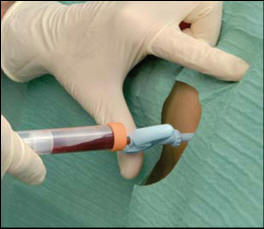 The treatment begins by
collecting a small amount of bone marrow from the patient�s hip via thin needle
mini-puncture under local anaesthesia. The stem cells are separated from the
bone marrow, where they are counted and their vitality is confirmed. The last
step consists of
inserting a fine spinal needle between the patient�s vertebrae and injecting the
stem cells into the cerebrospinal fluid, which flows into the brain.
The cost for Parkinson�s treatment starts at around
7,545 Euros (over 10,000 U.S. dollars).
The XCell-Center in
Germany has released results from their follow-up study of 50 Parkinson�s
Disease patients.
For the full results go to the
News release. The treatment begins by
collecting a small amount of bone marrow from the patient�s hip via thin needle
mini-puncture under local anaesthesia. The stem cells are separated from the
bone marrow, where they are counted and their vitality is confirmed. The last
step consists of
inserting a fine spinal needle between the patient�s vertebrae and injecting the
stem cells into the cerebrospinal fluid, which flows into the brain.
The cost for Parkinson�s treatment starts at around
7,545 Euros (over 10,000 U.S. dollars).
The XCell-Center in
Germany has released results from their follow-up study of 50 Parkinson�s
Disease patients.
For the full results go to the
News release.
Only just over half of the
patients showed any improvement at all. Improvement was determined merely as any
improvement rather than major improvements.
Only 8% of all patients had significant improvement
confirmed by their doctor. A greater number, over
10%, actually got worse. Over 90% of the
patients had to continue with the use of Parkinson's Disease drugs. Standard
assessment tests for Parkinson's Disease, such as the UPDRS do not appear to
have been used. Instead, it seems that patients largely assessed themselves even
though surgery for Parkinson's Disease is known to be highly affected by the
placebo effect.
In order to refer to this
article on its own
click here.
�
1st February 2010 - New research
THE WORLD'S HIGHEST INCIDENCE OF PARKINSON'S DISEASE
Movement Disorders [2010] Jan 27 [Epub ahead of
print] (J.Linder, H.Stenlund, L.Forsgren)
Complete abstract
The incidence of Parkinson's Disease is the rate at which people are being newly
diagnosed with Parkinson's Disease. The world's highest incidence of Parkinson's
Disease has been found to occur in Sweden. The incidence rate is 22.5 per
100,000. In a country the size of the U.S. this equates to 67,000 people being
newly diagnosed with Parkinson's Disease every single year.
Exceptionally high levels of Parkinson's Disease are usually found to be due to
toxicity.
 However,
in Sweden there is no such apparent cause. Sweden has a high life expectancy.
Japan has the highest life expectancy. In both countries there has been a recent
escalation
in the rates of
Parkinson's Disease, most probably due to people living longer in those
countries. This suggests that there could soon be a major increase in the number
of people with Parkinson's Disease due to increased life expectancy in other
countries as well.� For every person that has Parkinson's Disease, 10
people alive right now were considered likely to develop it. With increasing
life expectancies that number could be� far higher. In order to refer to this
article on its own
click here. However,
in Sweden there is no such apparent cause. Sweden has a high life expectancy.
Japan has the highest life expectancy. In both countries there has been a recent
escalation
in the rates of
Parkinson's Disease, most probably due to people living longer in those
countries. This suggests that there could soon be a major increase in the number
of people with Parkinson's Disease due to increased life expectancy in other
countries as well.� For every person that has Parkinson's Disease, 10
people alive right now were considered likely to develop it. With increasing
life expectancies that number could be� far higher. In order to refer to this
article on its own
click here.
��������������
��
|
.gif)
.gif)
 ��
��
 ��
��
 ��
��
 ��
��

 It works by preventing the formation
of prostaglandins. However, prostaglandins have nothing at all to do with the
biochemistry of Parkinson's Disease. So the full details might show that
Ibuprofen has little effect on Parkinson's Disease or that there is only an
indirect association. The most comprehensive research concerning the effect of
Ibuprofen on Parkinson's Disease assessed studies carried out over 40 years. The
effects of Ibuprofen were found to be far less than those of the news release,
and statistically could have shown a reduced association with Parkinson's
Disease of only 11%. For more details see the
It works by preventing the formation
of prostaglandins. However, prostaglandins have nothing at all to do with the
biochemistry of Parkinson's Disease. So the full details might show that
Ibuprofen has little effect on Parkinson's Disease or that there is only an
indirect association. The most comprehensive research concerning the effect of
Ibuprofen on Parkinson's Disease assessed studies carried out over 40 years. The
effects of Ibuprofen were found to be far less than those of the news release,
and statistically could have shown a reduced association with Parkinson's
Disease of only 11%. For more details see the
 Publisher's
description : Many patients seek alternative and complementary options. This
book fosters an understanding between conventional and complementary providers.
Chapters on : Alpha-Lipoic Acid, Aluminum, Antioxidants, Beta-carotene, Calorie
Restriction, Carnitine, Chelation, Cholesterol, Choline, Coenzyme Q-10,
Constipation, Creatine, Curcumin (Turmeric), Dairy, DHA (fish oil), Fava Beans,
Glutathione, H.pylori (Helicobacter pylori), Homocysteine, Iron, Manganese,
Marijuana (Cannabis sativa), Mucuna pruriens, Velvet bean, Cowhage, Niacin, Tea,
Vitamin B6, Vitamin D, and other topics.
Publisher's
description : Many patients seek alternative and complementary options. This
book fosters an understanding between conventional and complementary providers.
Chapters on : Alpha-Lipoic Acid, Aluminum, Antioxidants, Beta-carotene, Calorie
Restriction, Carnitine, Chelation, Cholesterol, Choline, Coenzyme Q-10,
Constipation, Creatine, Curcumin (Turmeric), Dairy, DHA (fish oil), Fava Beans,
Glutathione, H.pylori (Helicobacter pylori), Homocysteine, Iron, Manganese,
Marijuana (Cannabis sativa), Mucuna pruriens, Velvet bean, Cowhage, Niacin, Tea,
Vitamin B6, Vitamin D, and other topics.
 The treatment begins by
collecting a small amount of bone marrow from the patient�s hip via thin needle
mini-puncture under local anaesthesia. The stem cells are separated from the
bone marrow, where they are counted and their vitality is confirmed. The last
step consists of
inserting a fine spinal needle between the patient�s vertebrae and injecting the
stem cells into the cerebrospinal fluid, which flows into the brain.
The cost for Parkinson�s treatment starts at around
7,545 Euros (over 10,000 U.S. dollars).
The XCell-Center in
Germany has released results from their follow-up study of 50 Parkinson�s
Disease patients.
For the full results go to the
The treatment begins by
collecting a small amount of bone marrow from the patient�s hip via thin needle
mini-puncture under local anaesthesia. The stem cells are separated from the
bone marrow, where they are counted and their vitality is confirmed. The last
step consists of
inserting a fine spinal needle between the patient�s vertebrae and injecting the
stem cells into the cerebrospinal fluid, which flows into the brain.
The cost for Parkinson�s treatment starts at around
7,545 Euros (over 10,000 U.S. dollars).
The XCell-Center in
Germany has released results from their follow-up study of 50 Parkinson�s
Disease patients.
For the full results go to the
 However,
in Sweden there is no such apparent cause. Sweden has a high life expectancy.
Japan has the highest life expectancy. In both countries there has been a recent
escalation
in the rates of
Parkinson's Disease, most probably due to people living longer in those
countries. This suggests that there could soon be a major increase in the number
of people with Parkinson's Disease due to increased life expectancy in other
countries as well.� For every person that has Parkinson's Disease, 10
people alive right now were considered likely to develop it. With increasing
life expectancies that number could be� far higher. In order to refer to this
article on its own
However,
in Sweden there is no such apparent cause. Sweden has a high life expectancy.
Japan has the highest life expectancy. In both countries there has been a recent
escalation
in the rates of
Parkinson's Disease, most probably due to people living longer in those
countries. This suggests that there could soon be a major increase in the number
of people with Parkinson's Disease due to increased life expectancy in other
countries as well.� For every person that has Parkinson's Disease, 10
people alive right now were considered likely to develop it. With increasing
life expectancies that number could be� far higher. In order to refer to this
article on its own